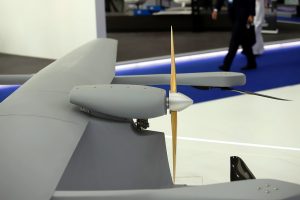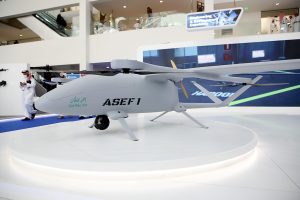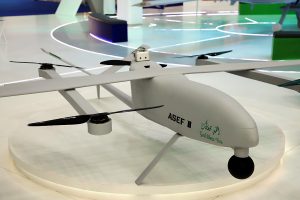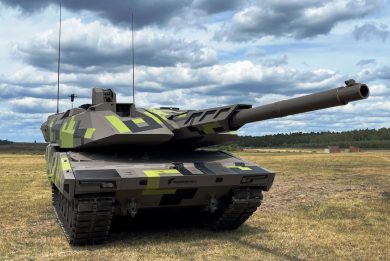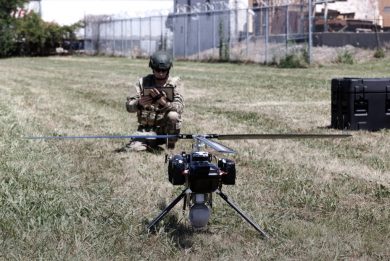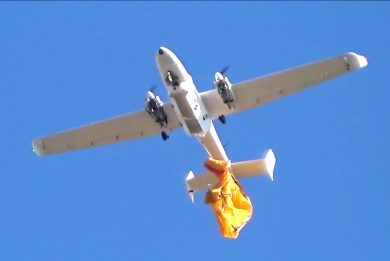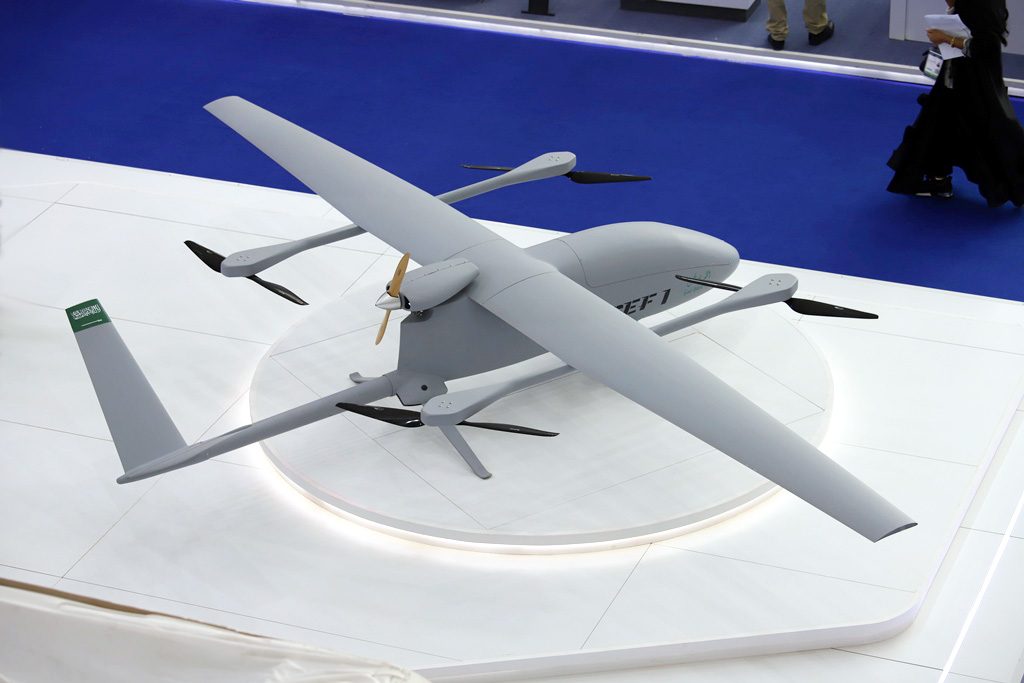
ASEF-1 and ASEF-II: two VTOL conventional flight UAS from Intra
At the World Defense Show the stand of Intra Defense Technologies, the Saudi Arabian company specialised in UASs, optronics and electronic warfare, was dominated by the half-size mock-up of the company new MALE, the Samoom. However this was far from being the only new UAS exhibited on the stand. Two more systems were visible, both featuring a similar architecture allowing them to take off and land vertically, while flying at high speed under wing aerodynamic lift. The two UASs architecture is characterised by a central fuselage fitted with a high wing. Under the wing we find on each side a horizontal strut slightly shorter of the UAS, which carries at the front and at the back an electric motor activating a two-blade propeller. These ensure the VTOL property of the aircraft. In the higher rear portion of the fuselage we find an internal combustion engine with a two-blade pushing propeller, this providing the thrust for the horizontal flight. A V empennage which boom protrudes from the lower part of the fuselage completes the aerodynamic design. Named ASEF-I and ASEF-II, the former is a 110 kg maximum take-off weight air vehicle, while the latter takes off at 25 kg weight.
The ASEF-I has a 5.76 meters wingspan and is fitted with a 15 hp 2-cylinder engine. Four legs ensure safe separation from the ground of the sensor package, and are turned backwards during flight to reduce drag. The ASEF-I can reach a maximum speed of 85 knots, optimal cruise speed for maximum endurance being 58 knots, which allow for a 16 hours flight time exploiting the 35 litres contained in the fuel tank.
The batteries powering the electric motors are not recharged by the petrol engine, an alternator would add too much weight and the aircraft is designed to take off and land just once, however their capacity allows two such manoeuvres as safety measure. The operational ceiling of the ASEF-I is 18,000 ft, maximum climb rate being 750 ft/min. The ASEF-I has a payload capacity of 26 kg, which allows to fit an effective optronic gimballed package. The mission range is of 150 km, which corresponds to that of the data link, a SATCOM system being proposed as option, which would replace the line-of-sight link without impacting the payload.
Coming to the smaller version, the ASEF-II is much lighter, 25 kg, it has a 3.6 meters wingspan and is powered by a single cylinder two-stroke 50 cm3 petrol engine providing 4 hp. A tricycle landing gear with two front legs and a rear one fitted at the rear of the tail boom provide standoff distance from the ground. Considering the lower speed, 45 knots maximum, the legs are fix. Optimum cruise speed is 35 knots, which ensures 6 hours endurance with the 5 litres fuel contained in the tank. Maximum operational ceiling is 15,000 ft, while maximum climb rate is 700 ft/min. The 5 kg payload allows for a smaller optronic payload to be installed, while operational range is 80 km, no SATCOM option being available.
Both UASs are at the same status, as first flight was expected to take place after the World Defense Show closure. EDR On-Line understood that the ASEF-II should become available before its bigger brother, the ASEF-I.
Photos by P. Valpolini

